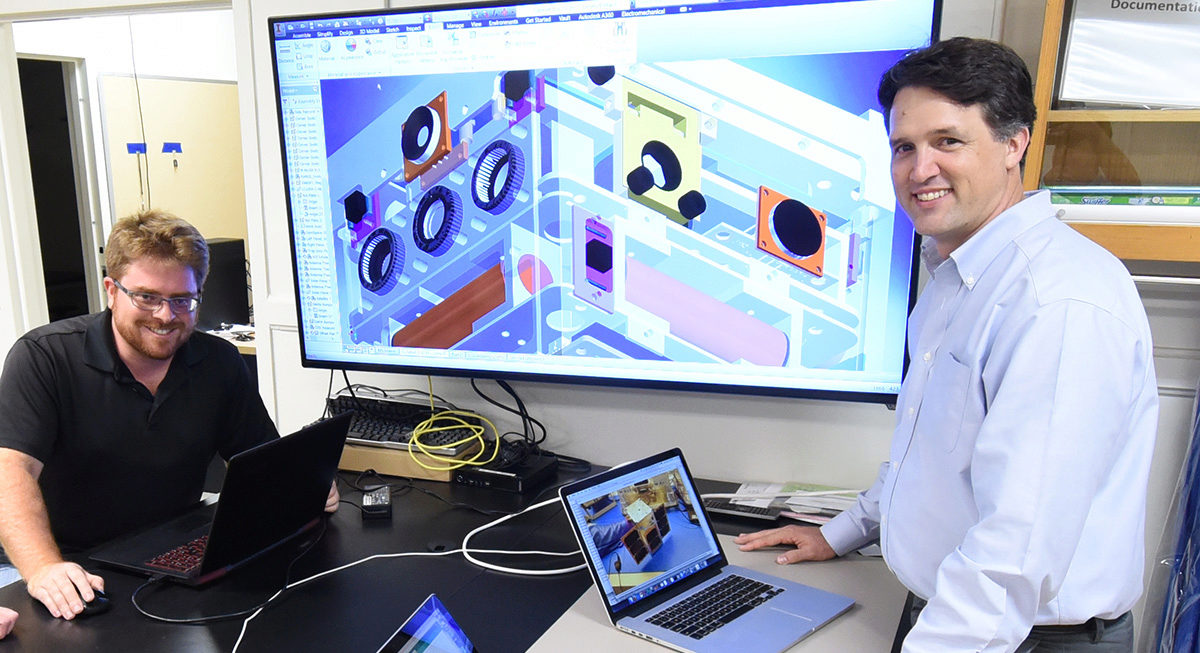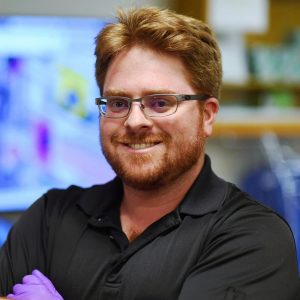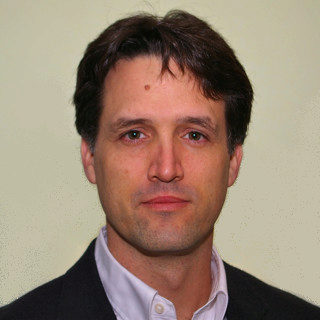
In the Lab. Byron T. Davis, left, is seen here with his advisor, Prof. Brian Gunter. The two are reviewing schematics for the RANGE smallsat that Gunter's lab has been developing.
Satellite positioning research being conducted by AE graduate student Byron T. Davis has earned him a prestigious NASA Earth and Space Science Fellowship (NESSF). The North Carolina native, 30, is one of just 69 applicants, nationwide, to receive an NESSF, which pays a yearly stipend of between $35K and $45K to promising graduate students so they can focus on their research.
 |
| Byron T. Davis |
Davis’s proposal, “Expanding the Use of Small-Satellite Constellations for Remote Sensing through Improved Orbit Determination” explores options for improving the precision orbit determination (POD) of cubesats, a class of satellites whose tiny size and elegant engineering make them attractive options for Earth remote sensing missions.
Small satellites are increasingly being engineered to rideshare on, and launch from, larger space-bound vehicles. From there, they are able to execute on a variety of objectives. Their utility as remote data collectors is diminished, however, if their own position cannot be accurately determined.
“It’s partly a scaling issue. Because of their size, cubesats are not able to employ traditional antenna technologies that would otherwise allow us to determine where they are,” says Davis, who is working on an active cubesat mission, RANGE, with his advisor, Dr. Brian Gunter.
“The quality of your remote sensing suffers if you can’t accurately determine where the observer [satellite] is located. The current technology for cubesat POD is within a ten-meter level of uncertainty.”
 |
| Prof. Brian Gunter |
Davis’s plan is to introduce additional points of reference to this positioning problem: low-low intersatellite range observables. He will then use simulation and analysis tools to define the requirements for collecting accurate intersatellite range measurements and he will evaluate their effectiveness in the process. He will also design an optimal cubesat constellation design for maximizing the benefit of Earth remote sensing through POD.